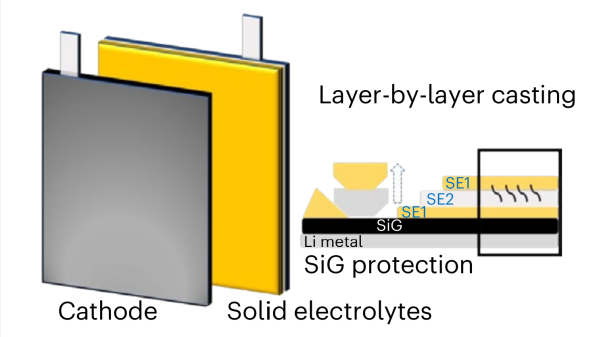One of the biggest issues facing the solid-state lithium-based batteries we all depend upon is of the performance of the anode; the transport of lithium ions and minimization of dendrite formation are critical problems and are responsible for charge/discharge rates and cell longevity. A team of researchers at Harvard have demonstrated a method for using a so-called constriction-susceptible structure on a silicon anode material in order to promote direct metal lithium deposition, as opposed to the predominant alloying reaction. After the initial silicon-lithium alloy layer is formed, subsequent layers are pure lithium. Micrometre-scale silicon particles at the anode constrain the lithiation process (i.e. during charging) where free lithium ions are pushed by the charge current towards the anode area. Because the silicon particles are so small, there is limited surface area for alloying to occur, so direct metal plating of lithium is preferred, but crucially it happens in a very uniform manner and thus does not tend to promote the formation of damaging metal dendrites.
Continue reading “Harvard Claims Breakthrough In Anode Behavior Of Solid State Lithium Batteries”










